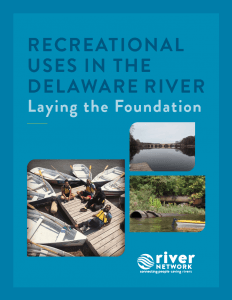Recreational Uses in the Delaware River: Laying the Foundation
 Our day-to-day lives and the focus of our work is affected by the regulatory environment in which we live. A relatively small proportion of the general population is aware of such terms as “designated uses,” “antidegradation,” and “impaired waters,” yet the framework of the Clean Water Act that was designed in the early 1970s and has been refined and implemented at the state and local levels ever since, has great bearing on our ability to safely recreate in our local waters, the health of aquatic life depending on local waters and the activities that occur on the landscape surrounding our local waters.
Our day-to-day lives and the focus of our work is affected by the regulatory environment in which we live. A relatively small proportion of the general population is aware of such terms as “designated uses,” “antidegradation,” and “impaired waters,” yet the framework of the Clean Water Act that was designed in the early 1970s and has been refined and implemented at the state and local levels ever since, has great bearing on our ability to safely recreate in our local waters, the health of aquatic life depending on local waters and the activities that occur on the landscape surrounding our local waters.
With that in mind, River Network compiled the following summary of the Clean Water Act foundation on which each Delaware River Basin state’s water quality program has been built. This summary is focused on the priorities of the William Penn Foundation’s Watershed Protection Program, and it aims to provide sufficient information to clarify the value of ongoing activities and offer perspectives for prioritizing future activities. In this summary, we cover basic information about the structure of water quality standards, and how designated uses, water quality criteria and the antidegradation programs in each Basin state and under the authority of the Delaware River Basin Commission play out specifically in regard to the proverbial “swimmable and fishable” goals of the Clean Water Act.
Click the Resource File button below to download the report.




